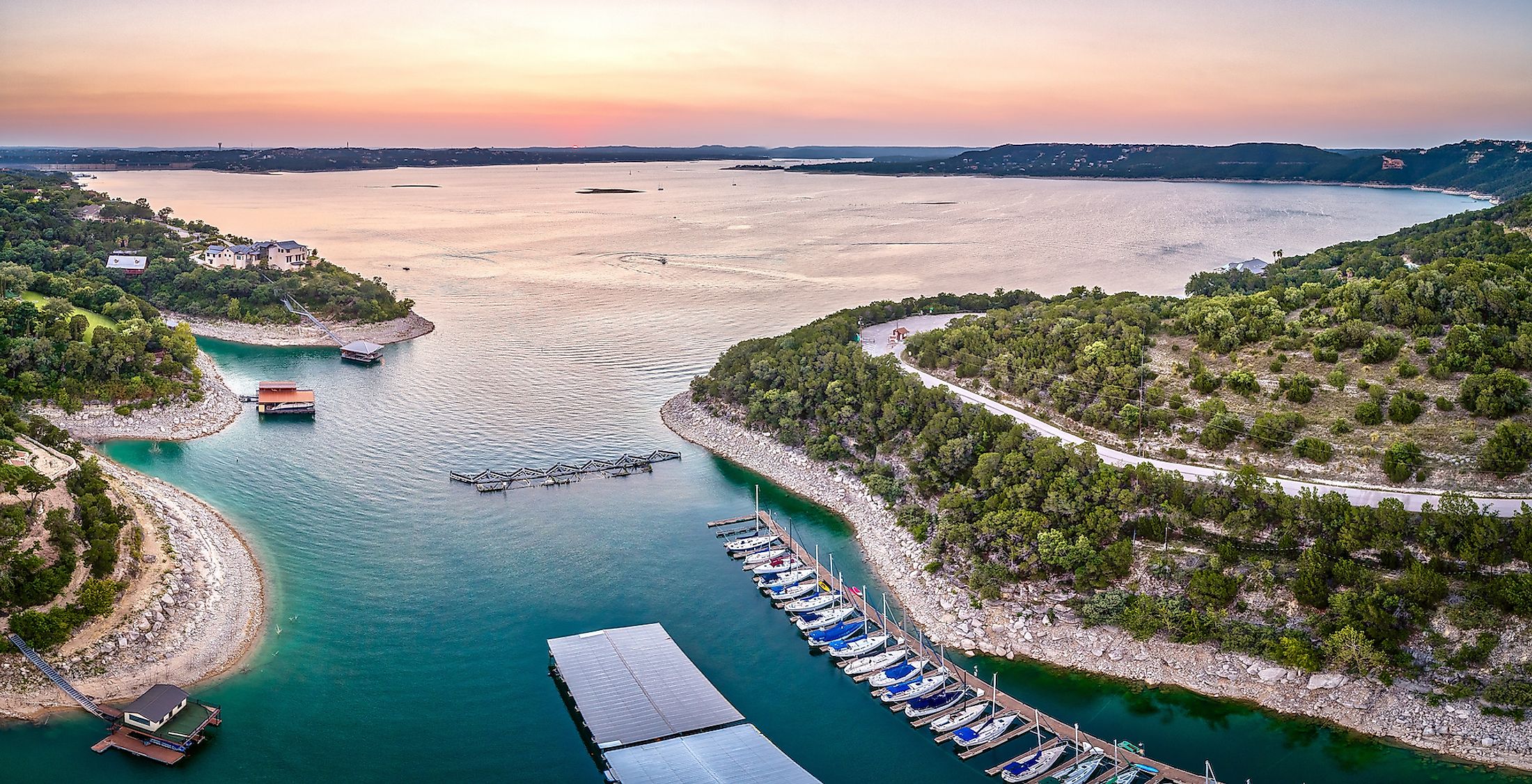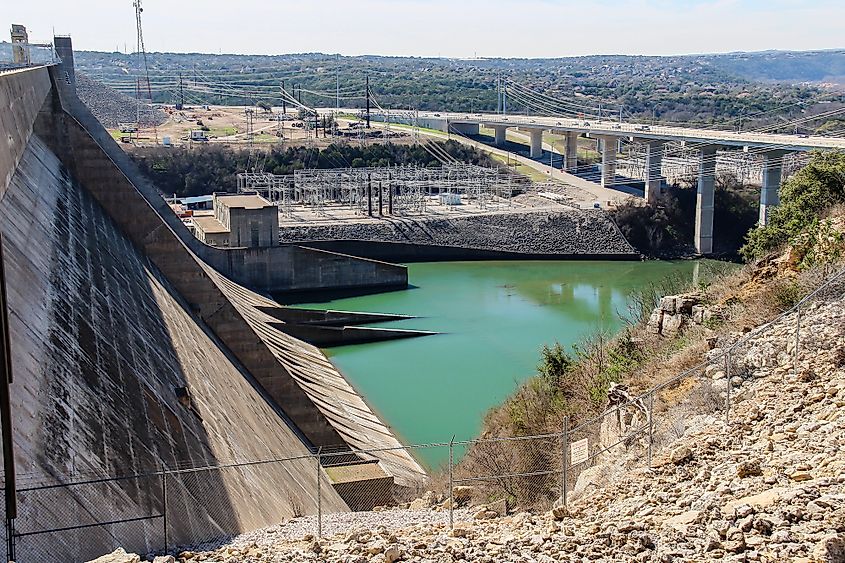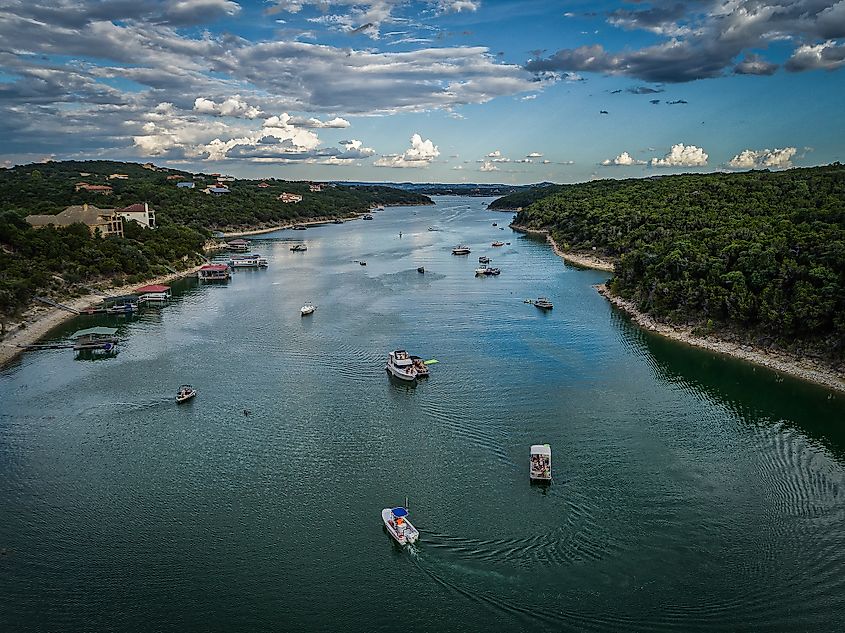
Lake Travis
Lake Travis is a human-made reservoir on the Colorado River. It is located in central Texas, United States, and has a surface area of roughly 76 km2, and a volume of 1.39 km3, though the water levels in the reservoir fluctuate quite a bit over the years. Lake Travis is also part of a larger system of reservoirs and storage lakes known as the Highland Lakes. This system consists of seven different reservoirs from Travis County to Max Starcke Dam. of these reservoirs, Lake Travis has the highest volume or water storage capacity.
Construction And Uses Of Lake Travis

The reservoir for Lake Travis was flooded via the Mansfield Dam which is located just west of Austin, Texas. The water source is the Colorado River, a water source which supplies a large number of dams and reservoirs along its path. The lake was built in order to control flood waters in an area where flash flooding was extremely common. In fact, the initial height of the dam had to be raised because it overflowed during a storm in 1938. After this, the capacity was deemed large enough to withstand even the most severe flooding conditions. Generally, the flood gates are opened in a time-delayed manner, in order to control outflow and decrease the possibility of flooding downstream. This also allows the water levels to be controlled around Lake Travis itself, eliminating any potential threats to the nearby community.

At full capacity, the lake has a water level of 208 meters above sea level, and if the water ever reaches above this, flood gates are opened on the Mansfield Dam in order to let out excess water. These fluctuations are almost entirely dependent on the level of precipitation that occurs in the region, and how much inflow is being received by the Colorado River (which itself fluctuates dramatically). The highest level on record for Lake Travis is 216.5 meters, which occurred in 1991, and the lowest level was 187.2 meters. 2008-2009, as well as 2010-2013 saw similarly low levels as much of Texas experienced drought, however the levels have not dropped as low as 187 meters again.
When the lake is at its highest capacity, the maximum amount of dischargeable water is just under a million gallons of water per second. Because of this, the careful regulation and release of these waters is vital to the sustainability of the dam, the reservoir, and the areas downstream.
A Popular Attraction
While primarily used as a dam and flood storage basin, the lake has also gained interest as a recreational destination. Popular activities include boating, swimming, fishing, camping, diving and even zip lining. The lake itself is very clear, adding to its appeal for visitors.
Wildlife
Fishing is a popular activity on the lake, and there are several varieties of fish species that live in its waters. Most of these populations are artificially stocked, or at least were artificially introduced to the lake itself. They include, largemouth bass, white bass, striped bass, catfish, sunfish, and guadalupe bass.

Fatalities On Lake Travis
Though the lake remains popular for visitors, it does have a somewhat dark history of death on its waters. In 2011, Lake Travis had more accidental deaths than any other lake in Texas. Between the years 2000 and 2015, it held the second highest spot on the same list.Generally, the waters are deemed to be safe if not during flooding seasons - when recreational water sports are to be avoided. Most of the fatalities, therefore, are due to boating accidents, careless boating, alcohol, or unattended children. Because of this, the lake is not thought to be particularly dangerous, despite the higher than average death toll.
Lake Travis is an important reservoir that both helps to maintain safe water levels in and around Travis County, Texas, and ensure the safe flow of the Colorado River throughout the state. Though intended as a practical solution, Lake Travis has also become a staple recreational getaway for both visitors and locals to enjoy the outdoors and the beautiful Texan landscape.











